Since Carl Zeiss AG first released their line of Touit lenses for Sony NEX and Fuji X-mount, there has been much debate, especially among Fuji owners, as to whether the pricey Zeiss lenses are worth their premium over the excellent options from the OEMs. Last year, I did a faceoff between the Fuji XF 14mm f/2.8 and the Zeiss Touit 12mm f/2.8. Today’s battle? Zeiss Touit 32mm f/1.8 Planar vs. Fujifilm Fujinon XF 35mm f/1.4.

Both of these lenses have been praised as outstanding normal lenses for the APS-C Fuji X-System. The 35mm f/1.4 is one of the original lenses for Fuji X-Mount, while the Zeiss comes in promising that legendary Zeiss character and sharpness.
Both lenses are extremely well-built, with bodies constructed of metal. The lenses are almost exactly the same size as well. The Fuji lens has the added advantage of a faster f/1.4 aperture…a full 2/3 stop faster than the Touit 32mm. The Zeiss name comes with a cost: $1,000 for the Touit 32mm. the Fuji comes in a whopping $400 less, at $600. Let’s find out if the 32mm is worth nearly double the cost.
Thanks to LensRentals.com for providing the Zeiss 32mm f/1.8 for this test and my upcoming review. Head over there if you need a lens or camera for a special event or just to try out.
The Test
Today’s test looks at the lenses in an interior type setting, which allows us to evaluate center and edge sharpness as well as the rendition of out of focus areas, or bokeh. The setup involved a flat book box stood up to evaluate sharpness. Behind this was placed a crystal decanter, which provides a wealth of specular highlights, as well as a vase filled with wooden spiral sticks, which can show how the lenses render busier backgrounds. Every shot was taken tripod mounted, square to the target book box, approximately 1m away. Self timer was used in order to eliminate any residual camera shake from the shutter actuation. The 35mm shots were framed first, and then the tripod was moved slightly closer to make the target box the same size in the frame for the slightly wider 32mm lens. Focus was made in the center of the frame, directly on the upper left corner of the book box. Crops from the same aperture and lens are all taken from the same image.
Shots were taken wide open, then with both lenses at f/1.8, f/2.8, f/4 and f/5.6.
First, let’s look at the whole scene, and look at how the lenses render this scene when each lens is shot at maximum aperture. This will also give you an idea of the degree of extra subject separation the Fuji’s 2/3 stop speed advantage confers.
As with all images in this comparison, click to enlarge the image.
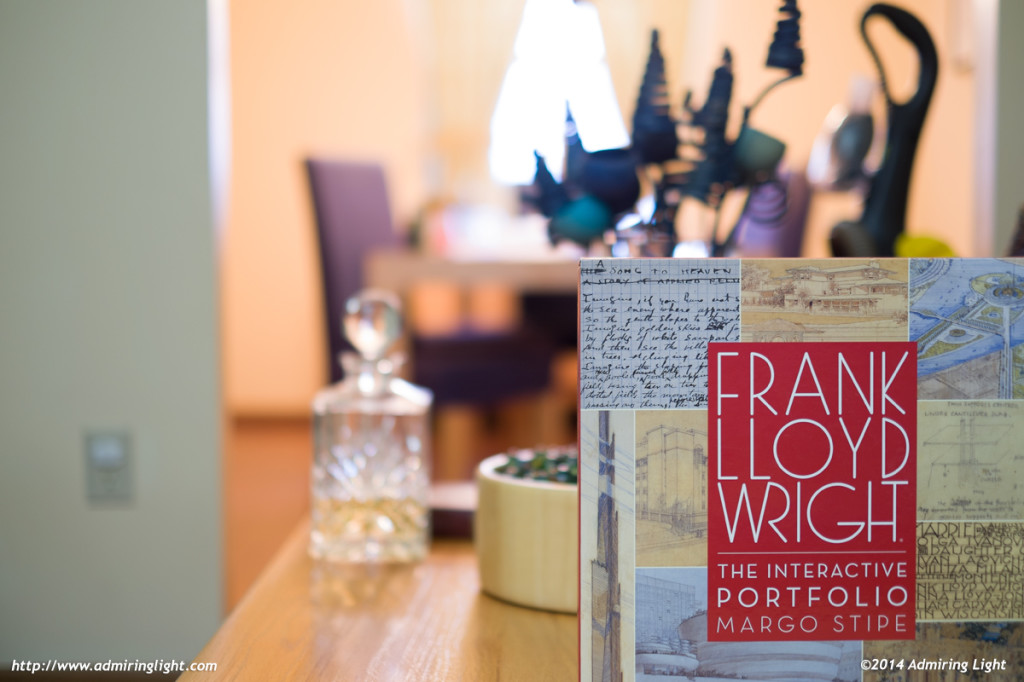
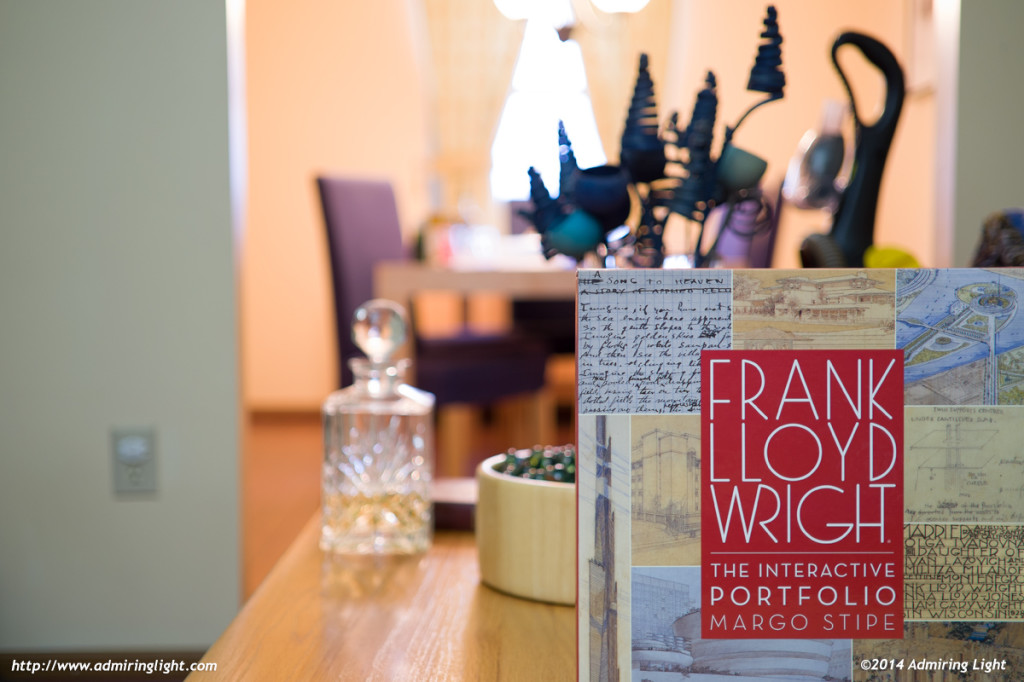
Center Sharpness
What follows are 100% crops from the RAW images, processed in Lightroom 5.3. Each shot was processed with identical settings. Click on each image to enlarge to full size.
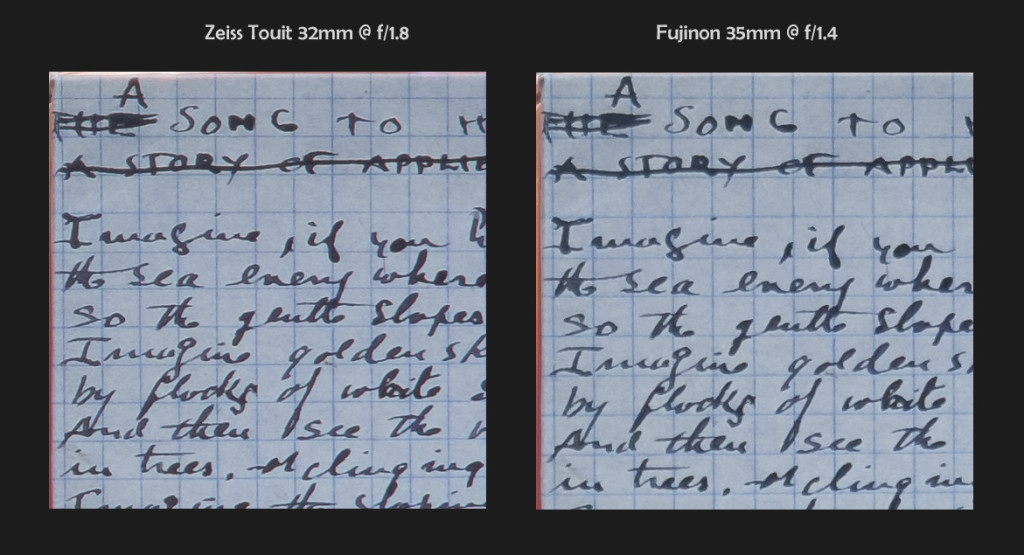
Wide open, there is very similar sharpness in the center of the frame. The Zeiss might have ever so slightly higher contrast and be ever so slightly sharper, but they are very close. Remember the Fuji is much faster here as well.

With both lenses at f/1.8, center sharpness is essentially a wash. Both lenses produce extremely sharp results in the image center at large apertures.

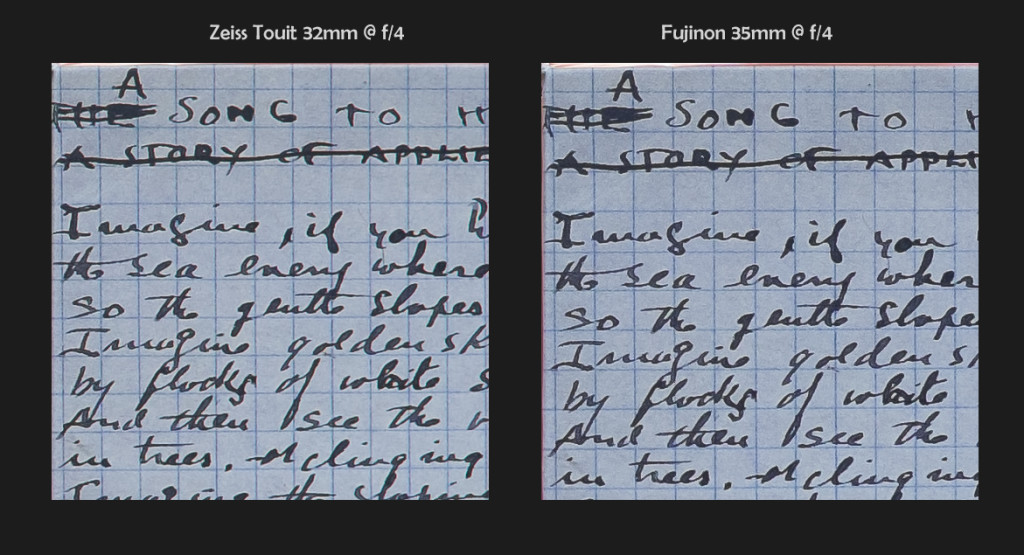
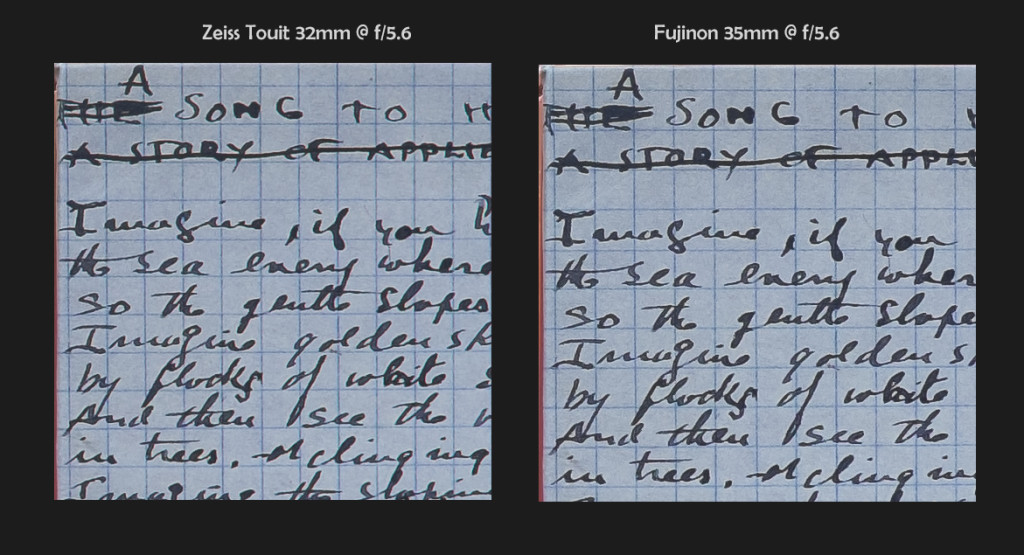
As the images are stopped down further, the lenses remain extremely close to each other in the image center. The Zeiss might be a hair sharper at f/2.8, while the Fuji might be a hair sharper at f/4 and f/5.6. In any case, this one’s close enough to be considered a wash.





Leave a Reply